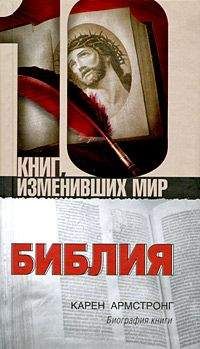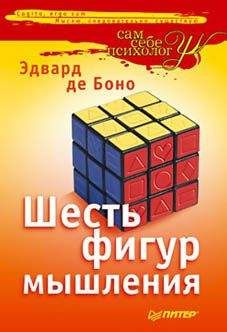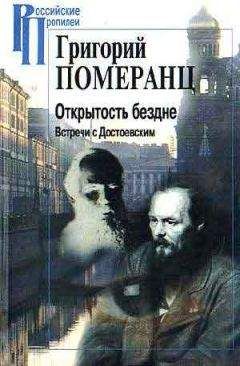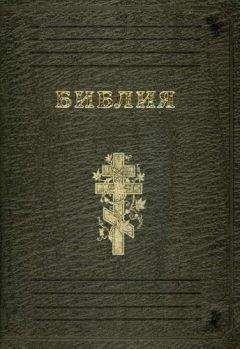267
Bruns, «Midrash and Allegory», p. 629.
Fishbane, Garments of Torah, pp. 22-23. Втор. 21:22-23.
Втор. 21:22-23.
Мишна, Санхедрин, 6:4-5.
Fishbane, Garments of Torah, pp. 30.
Сифре Бемидбар, Писка 84; Зах. 12:8; перевод Fishbane, Garments of Torah, pp. 30-31.
Втор. 30:12.
Исx. 33:2, интерпретация, приведённая в мидраше.
Бава-Мециа, 59b, цит. по C. G. Montefiore, Н. Loewe (eds), A Rabbinic Anthology, p. 340-341.
Раба на книгу Бытия 1:14.
Вавилонский Талмуд, Санхедрин, 99b.
Ibid.
Иер. 23:29.
Мидраш Раба на Песнь Песней 1.10.2; Bruns, «Midrash and Allegory», p. 627; Fishbane, «Midrash and Nature of Scripture», p. 19.
Вавилонский Талмуд, Хагига 14b, Талмуд, Хагига 2:3-4; Иерусалимский Талмуд, Хагига 2:1, 77а.
Мишна Тогорот; Ядаим 3:5, перевод Wilfred Catwell Smith, What is Scripture? A Comparative Approach, London, 1993, p. 253.
Раба на книгу Левит 8:2; Сота 9b.
Иерусалимский Талмуд, Хагига 2:1.
Талмуд, Санхедрин 11:5; Талмуд, Зевахим 1:5; Талмуд Маасер Шени 2:1; Bowker, The Targums, pp. 49-53.
Дио Кассий, История, 69:2.
Традиционно считается, что это произошло в Явне, но имеются весомые аргументы в пользу того, чтобы отнести это событие ко времени пребывания школы раввинов в Уше, — этому периоду более свойственно доверие к письменной традиции.
Akenson, Surpassing Wonder, pp. 324-325.
В M. Ядаим 4:3; М. Эдуйот 8:7; М. Пеа 2:6; М. Рош-Хашана 2:9 Мишна приводит упоминания Моисея о её галахот (законах), но не утверждает, что они напрямую восходят к Моисею или были даны ему на горе Синай; Akenson, Surpassing Wonder, pp. 302-303.
Catwell Smith, What is Scripture? pp. 116-117.
Jacob Neusner, Medium and Message in Judaism, Atlanta, 1989, p. 3; «The Mishnah in Philosophical Context and Out of Canonical Bounds» Journal of Biblical Literature, 11, Summer 1993; Akenson, Surpassing Wonder, pp. 305-320.
Jacob Neusner, Judaism. The Evidence of the Mishnah, Chicago, 1981, pp. 87-91, 97-101, 132, 131, 137, 150-153.
Вавилонский Талмуд, Менахот, 110a.
Akenson, Surpassing Wonder, pp. 329-339.
Историческая достоверность этого собрания сомнительна, в Мишне оно не упоминается.
Иис. Н. 24:21
Gershom Scholem, On the Kabbalah and Its Symbolism, New York, 1995, p. 46.
Пиркей Авот, 1:1; 3:13, цит. по Jacob Neusner (перев.), The Mishnah, A New translation, New Haven, 1988.
Akenson, Surpassing Wonder, pp. 361-362.
Ibid., pp. 366-95.
Jaroslav Pelikan, Whose Bible Is It? A History of Scriptures Through the Ages, New York, 2005, pp. 67-68.
Вавилонский Талмуд, Йома, 81a.
Davod Kraemer, The Mind of the Talmud. An Intellectual History of the Bavli, New York and Oxford, 1990, pp. 151.
Вавилонский Талмуд, Зватим, 99a.
Вавилонский Талмуд, Баба Батра, 12а.
Catwell Smith, What is Scripture? pp. 102-104; Pelikan, Whose Bible Is It? p. 66.
Louis Jacobs, The Talmudic Argument. A Study in Talmudic Reasoning and Methology, Cambridge, 1984, pp. 20-23; 203-213.
Akenson, Surpassing Wonder, pp. 379.
Мехилта де-рабби Ишмаэль, Вешалах, 7; Fishbane, Garments of Torah, p. 124.
В. Кедошим, 49b; Catwell Smith, What is Scripture?, pp. 116-117.
William G. Braude (ed. and trans.), Pesikta Rabbati Discourses for Feasts, Fasts and Special Sabbaths, 2 vols, New Haven, 1968, Piska 2:3.
Burton L. Mack, Who Wrote the New Testament? The Making of the Christian Myth, San Francisco, 1995, pp. 266-273.
Юстин. Апология, 1.36; Mack, Who Wrote the New Testament? p. 269.
Юстин. Апология, 1.63.
Ириней, Против ересей, 4:23.
R. R. Reno, «Origen», in Justin S. Holcomb (ed.), Christian Theologies of Scripture: A Comparative Introduction, New York and London, 2006, pp. 23-24; R. M. Grant, Ireneaus of Lyon, 1997, pp. 47-51.
Еф. 1:10, Американское исправленное стандартное издание Библии. Послание к ефесянам, вероятно, было написано не самим Павлом.
David S. Pacini, «Excursus: Reading Holy Write: the Locus of Modern Spirituality», in Louis Dupre and Don E. Saliers, Christian Spirituality: Post Reformation and Modern, London and New York, 1989, p. 177.
Ириней, Против ересей, 1:8-9.
Mack, Who Wrote the New Testament? pp. 285-286.
Мат. 13:38-44.
Ириней, Против ересей, 4.26.1.
Евсевий, Demonstratio Evangelium, 4:15, в J. Р. Migne (ed.), Patrologia Graeca, Paris, 1857-1866, vol. 22, p. 296. Курсив мой.
Ibid.
Reno, «Origen»; David W. Kling, The Bible in history: How the Texts Have Shaped the Times, Oxford and New York, 1994, pp. 89-91; Jaroslav Pelikan, Whose Bible Is It? A History of Scriptures Through the Ages, New York, 2005, pp. 61-62.
R. В. Tollington (trans.), Selections from the Commentaries and Homilies of Origen, London, 1929, p. 54. Gerald L. Bruns, «Midrash and Allegory: The beginning of Scriptural Interpretation» in Robert Alter and Frank Kermode (eds), The Literary Guide to the Bible, London, 1987, p. 365.
Мат. 5:29.
Ориген, О началах, 4.3.1. Здесь Ориген комментирует этот стих так, как он переведён в Септуагинте.
Исх. 25—31; 35—40.
Быт. 3:8.
Мат. 10:10.
О началах, 4.3.1. цит. по G. W. Butterworth (trans.), Origen; On First Principles, Gloucester, Mass. 1973.
Гомилии на Иезекииля 1:2, цит. по Jaroslav Pelikan, Whose Bible Is It? A History of Scriptures Through the Ages, New York, 2005, p. 60.
Быт. 20.
Исx. 12:37.
Мат. 6:20.
Исх. 13:21.
1 Кор. 10:1-4.
Ibid., ср. Иоан. 6:51.
Мат. 6:19.
Мат. 19:21.
Ronald Е. Haine (trains.), Origen: Homolies on Genesis and Exodus, Washington DC, 1982, p. 277; Reno, «Origen», pp. 25-26.
Reno, «Origen», p. 29.
Mircea Eliade, The Myth of Eternal Return, or Cosmos and History, translated by Williard R. Trask, New York, 1959.
Ориген, О началах, Введение, параграф 8.
Ibid., 4.2.3.
Ibid., 2.3.1.
Ibid., 4.2.9.
Ibid.
Ibid., 4.2.3.
Ibid., 4.2.7.
Ibid., 4.1.6.
R. P. Lawson (trans.), Origen, The Song of Songs: Commentary and Homilies, New York, 1956, p. 44.
Песн. П. 1:2.
Еф. 5:23-32.
Lawson, Song of Songs, p. 60.
Ibid., p. 61.
Origen, Commentary on John, 6:1 in Reno, «Origen», p. 28.
Мат. 19:21.
Douglas Burton Christie, The Word in the Desert: Scripture and the Quest for Holiness in Early Christian Monasticism, New York and Oxford, 1993, pp. 297-298; Kling, Bible in History, pp. 23-40.
Beldon C. Lane, The solace of Fierce Landscapes: Exploring Desert and Monastic Spirituality, New York and Oxford, 1998, p. 175.
Jaroslav Pelikan, The Christian Tradition, A History of the Development of Doctrine. 1. The Emergence of Catholic Tradition (100–600), Chicago and London, 1971, pp. 191-200.
Мат. 26:39; 24:36; 17:5.
Василий Великий, О Святом Духе, 28:66.
Василий Великий, Послание, 234:1.
Дионисий Ареопагит — имя первого человека, которого апостол Павел обратил в христианство в Афинах.





